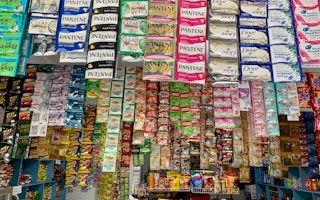Single-use plastic packaging is expected to be a US$26 billion global industry this year, with rapid market growth driven by rising spending power in Asia Pacific, according to new analysis.
To continue reading, subscribe to Eco‑Business.
There's something for everyone. We offer a range of subscription plans.
- Access our stories and receive our Insights Weekly newsletter with the free EB Member plan.
- Unlock unlimited access to our content and archive with EB Circle.
- Publish your content with EB Premium.
The market for throwaway plastic is anticipated to expand by 6.1 per cent in 2023, and is projected to be worth US$47 billion by 2033, the study by Dubai-based intelligence and consulting firm Future Market Insights finds.
The durability, flexibility, convenience and low cost of disposable plastics have led to their widespread adoption across many industries, with the fastest growth areas being in e-commerce, food and beverages and healthcare, the report said.
Growing affluence in developing regions such as Asia and the ubiquity of single-use plastic sachets to sell products in small quantities are cited as reasons for growth.
The report also said there is now a growing number of packaging facilities to supply expanding urban populations.
It projects growth of the single-use plastic packaging market despite a growing number of bans on certain types of disposable plastics in key markets such as the European Union, United Kingdom, United States, Taiwan and Hong Kong, as well as heightened awareness of the environmental impact of plastic pollution in the region.
Asia Pacific accounts for the highest market share in global single-use plastics packaging market growth, largely due to the food industry’s growing use of online deliveries to supply customers in markets such as India and China.
A key trend that could shape the future of single-use plastics is healthcare, as providers increase their use of disposables to mitigate cross contamination and infection risk in the wake of the Covid-19 pandemic, the study said.
The report cites the likes of US medical device plastics firm Bemis and New Jersey-based Zipz, which makes wine glasses from polyethylene terephthalate (PET) that looks like classic glassware, as some of the leading market players.
The report emerges two months after research from Minderoo Foundation, a non-profit, found that over the past few years, global production of single-use plastics outstripped recycled plastic production by 15 times.
A further 15 million tonnes of single-use plastic than exists now is expected to be in circulation by 2027 as fossil fuels firms pivot from oil to petrochemicals – the raw material for making plastics – to sustain revenue growth.










